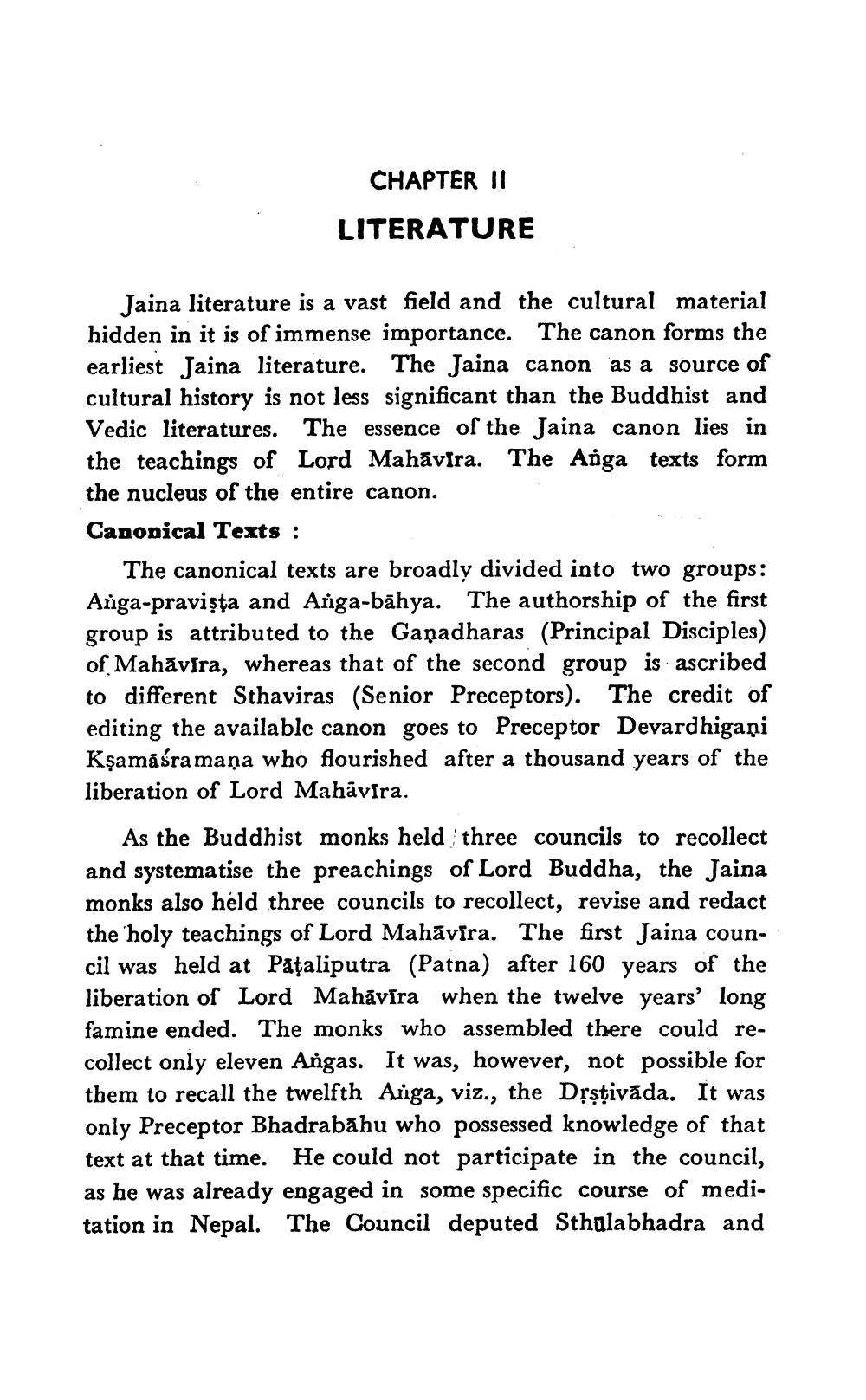________________
CHAPTER 11 LITERATURE
Jaina literature is a vast field and the cultural material hidden in it is of immense importance. The canon forms the earliest Jaina literature. The Jaina canon as a source of cultural history is not less significant than the Buddhist and Vedic literatures. The essence of the Jaina canon lies in the teachings of Lord Mahāvīra. The Arga texts form the nucleus of the entire canon. Canonical Texts :
The canonical texts are broadly divided into two groups: Anga-pravişta and Arga-bāhya. The authorship of the first group is attributed to the Ganadharas (Principal Disciples) of Mahāvīra, whereas that of the second group is ascribed to different Sthaviras (Senior Preceptors). The credit of editing the available canon goes to Preceptor Devardhigani Kşamāśramana who flourished after a thousand years of the liberation of Lord Mahāvīra.
As the Buddhist monks held three councils to recollect and systematise the preachings of Lord Buddha, the Jaina monks also held three councils to recollect, revise and redact the holy teachings of Lord Mahāvsra. The first Jaina council was held at Pataliputra (Patna) after 160 years of the liberation of Lord Mahāvīra when the twelve years' long famine ended. The monks who assembled there could recollect only eleven Angas. It was, however, not possible for them to recall the twelfth Auga, viz., the Dşștivāda. It was only Preceptor Bhadrabahu who possessed knowledge of that text at that time. He could not participate in the council, as he was already engaged in some specific course of meditation in Nepal. The Council deputed Sthalabhadra and




